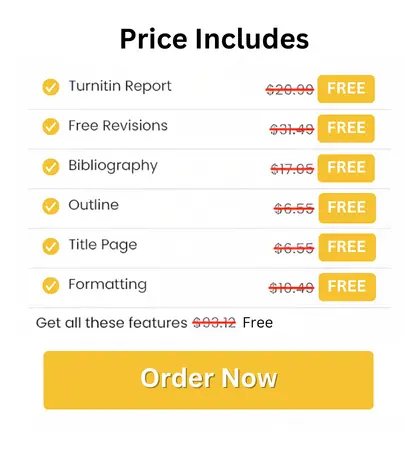
6006MHR Project Management Report Sample
Assignment Task
In your project management report, you are required to review the live project you had worked on within this module, This should include the following seven items:
1) Critically evaluate project management methodologies with emphasis on their merits and demerits, with appropriate use of literature
2) Review the project scope, project strategy WBS, Network Diagram and Risks.
3) Critically present the stakeholder analysis for the project
4) Develop a comprehensive risk management plan, communication plan for the project.
5) Critically present the resource and cost allocation in your project.
6) Evaluate and critically reflect on the performance of the project with sufficient supporting evidence (e.g. weblink, screenshots, and statistics)
7) Critically reflect on the management of the project by including the lessons learned during the whole process and include future recommendations.
Solution
1. Critically Evaluate Project Management Methodologies
The project management plan incorporates a timeline for delivering a few fitness-related videos, including tasks like recording, editing, and making presentations. In this unique situation, assessing project management approaches implies thinking about how proper they are for dealing with a project like this. There are different procedures, and each has advantages and disadvantages. Traditional project management techniques, like Waterfall, request a project's work in a sequential way, linear way. With this methodology, tasks are finished in a pre-planned request and timeline (Thesing et al. 2021). This can be rigid even though it could give construction and clarity, especially assuming changes are required midway through the project. It is also possible that an absence of feedback prompts yields that do not satisfy stakeholder expectations.
Agile methods, advance repetitive turn of events and continuous interest from team members and partners. Agile project management is a flexible and versatile methodology that is appropriate for projects with active needs, like video creation, wherein creative decisions might be made during the interaction. Based on these agile focuses on adaptability over consistency, carrying out projects with pre-planned timelines and deliverables. A hybrid approach combines components of Agile and regular methods. Lean project management and the blend of Agile and Waterfall are two models. This can offer the smartest possible situation, allowing deliberate planning along with planned changes and ceaseless progression. The successful use of a hybrid technique requires a profound understanding of the two frameworks and the intentional mixing of their standards.
.png)
2. Review the Project Scope, Project Strategy, WBS, Network Diagram and Risks
WBS
.png)
Figure 1: Work Breakdown Structure and time plan
(Source: Self-Created)
Network Diagram
.png)
Figure 2: Network Diagram
(Source: Self-Created)
Risk Metrics
3. Stakeholder Analysis for the Project
.png)
.png)
.png)
Table 1: Stakeholder analysis for the project
(Source: Self-Developed)
In the project, different stakeholders are present such as the project lead project manager weavers and subscribers. The stakeholder analysis provides significant importance for effective communication and strategies for engagement with each of the stakeholder group expectations and influences are decided in the project. For managing the stakeholders’ regular updates clear communication channels and active involvement of collaboration are required to be included in the project. Different concerns in the project such as reaching potential audiences for maximising channel input are also maintained by the stakeholder analysis process (Aghileh et al. 2024). This stakeholder analysis provides valuable insight for understanding the YouTube channel project of fitFusion. All that needs and delivery of the stakeholders for gaining opportunity and navigating challenges make a healthy and engaging project platform university assignment help.
4. Risk management plan
To deal with different risks that are present in the project categories are divided and along with mitigation strategies are also described in the below table.
.png)
.png)
.png)
.png)
Table 2: Risk management plan for the project
(Source: Self-Developed)
Communication plan
An effective communication plan helps to improve all the obstacles that are faced by the project in the process. Here a simplified communication plan for all the stakeholders along with their communication channels and frequency is described.
.png)
.png)
.png)
.png)
.png)
Table 3: Communication plan for the project
(Source: Self-Developed)
5. Resource Allocation of the Project
For the resource allocation for the YouTube channel project, various aspects such as personnel time equipment and budget allocation need to be done to get an effective outcome from the efforts.
The primary resource for the YouTube channel is personal allocation. A capable and diverse team needs to be made by including a project manager, video creators, marketing experts, editors, and content developers. All the team members play significant roles in different face completion in the project. Starting from the video and then editing the video and then publishing the content as per the marketing strategy, an effective project management team is very important. For the project's success required resources need to be in the state including equipment for filming and editing. Video production of high-quality needs lighting equipment, cameras, microphones, and different editing software (Pietrantuono, 2020). For the project completion, effective time management is very important for meeting the project deadlines and completing the milestones. A proper schedule and timeline should be maintained by the team in each face of the project starting from planning the content and then filming and editing. After uploading the video, monitoring the progress, analysing feedback, and understanding the reviews also need significant time allocation.
Allocation of budget is another significant criterion for project completion. Covering promotional and production and expenses for effective final outcome requires proper financial management and budgeting (Issa and Tu, 2020). Ensuring cost-effective delivery and maximising the revenue finally provide quality content for the customers.
The Critical Presentation of The Cost Allocation Within the Project
.png)
.png)
Table 1: The Cost Allocation Table
(Source: Self-Developed)
In light of effectively completing the project that chiefly concentrates on the creation of a YouTube channel with the development of four videos related based on wellness, and fitness content for inspiring people about a healthier lifestyle, it is essential to formulate an accurate cost allocation plan for the project (Wang et al. 2021). The cost allocation plan can be deemed as an important written summary that tends to demonstrate the necessary costs allocated for a particular project for the successful completion of each and every project activity. Therefore, in order to identify the essential costs and expenses that are associated with the present project and exhibit the allocation of costs to each of the project members of this present, the cost allocation plan has been illustrated above (Panfilova et al. 2020). In view of the cost allocation plan, the possible timeframe for expenditure on different containers has been outlined which starts from the very beginning of the project which is 16’th February 2024, and ends at the date of 19’th March 2024.
The overall budget of the project has been finalized to £100, with an expected profit of £315. Moreover, the first expense has been identified as the low volume expenses which are the transportation costs that are essential for traveling to purchase the necessary tools and props. Next comes the costs related to the promotion, and digital marketing, which is highly important and costs £30. Later wards, the expenses related to the video editing software, and tools have been estimated to cost around £20. Finally, the costs related to the equipment like camera, lighting, and audio maintenance tools have been estimated to be £40, and the collective budget of the team members will fund all of these expenses.
6. The Evaluation and The Critical Reflection on The Performance of The Project
In view of the overall project, from its initiation to completion, each and every phase and aspect of the project has been critically evaluated in order to assess the performance of the overall project. The results obtained from the assessment have revealed that the current project has a high potential of performing effectively, because firstly, at the beginning phase of the project, the scope of the project was developed, and shared among the team members which has ensured that realistic expectation is set, and healthy boundaries are developed for ensuring that the project is on track towards success (Ajmal et al. 2022). Moreover, the distribution of different roles, and responsibilities of the project to each of the team members has reduced the chances of lack of clarity related to the individual responsibilities, and fosters teamwork, and collaboration which is essential for the accomplishment of the project. Moreover, through conducting the micro-environmental analysis of the project, the project team members were able to identify the key streets and opportunities associated with the project which can be the key contributors to the success of the present project.
On the other hand, with the SWOT analysis, the teammates of the project were able to recognize the areas of improvement related to the project that can be potential weaknesses or major threats behind the failure of the project. On the other hand, the integration of the work breakdown structure or the WBS in the project has helped in defining and organizing the works that are necessary for the effective progression of the project (Cerezo-Narváez et al. 2020). In addition to this, the work breakdown structure has ensured that the performance of the project gets improved by ensuring that the project and its activities are performed by the schedule, and the project does not get delayed. These are some of the key factors related to the project that have helped in identifying whether the performance of the project has been up to the mark.
7. The Critical Reflection on The Lesson Learned During the Whole Process of The Project and Future Recommendation
In consideration of advancing through the overall process of the project, there are many vital lessons that have been learned. For example, it has been learned how the project scope tends to assist in highlighting the visions, and goals of the project to the stakeholders, or the team members of the project. In fact, the project processes have helped in developing a profound understanding of the SWOT, and TOWS analysis for the identification of strengths, weakness, opportunities, threats, and the importance of these frameworks for the development of appropriate strategies to take the project further towards success (Brycht and Ulewicz, 2023). The work breakdown structure and the network diagram have helped in comprehending their importance for scheduling different activities, and responsibilities associated with the project. The plan related to the management of stakeholders has helped in understanding the importance of segmenting the roles, categories, influence, and interests of the stakeholders.
In order to improve the project further in an effective way, there are some future recommendations that are enlisted below:
? It is important to sufficiently invest in purchasing, and using equipment and technologies that can enhance the performance of the project (Rizvanovi? et al. 2023)
? The application of creative, and analytical thinking for the creation of unique, creative, and visually appealing content can improve the viewer's rate for the video
? Engaging with the influencers who relate to the niche content can help attract more audiences through YouTube videos (Erdo?mu? and KARAKAYA, 2022)
? The implementation of appropriate monetization strategies can help improve the revenue and profit through the videos
References
Afrin, M., Jin, J., Rahman, A., Rahman, A., Wan, J. and Hossain, E., 2021. Resource allocation and service provisioning in multi-agent cloud robotics: A comprehensive survey. IEEE Communications Surveys & Tutorials, 23(2), pp.842-870.https://arxiv.org/pdf/2104.14270
Aghileh, M., Tereso, A., Alvelos, F. and Monteiro Lopes, M.O., 2024. Multi-project scheduling under uncertainty and resource flexibility: a systematic literature review. Production & Manufacturing Research, 12(1), p.2319574.https://www.tandfonline.com/doi/pdf/10.1080/21693277.2024.2319574
Ajmal, M.M., Khan, M., Gunasekaran, A. and Helo, P.T., 2022. Managing project scope creep in construction industry. Engineering, Construction and Architectural Management, 29(7), pp.2786-2809.
Brycht, N. and Ulewicz, M., 2023. Application of the SWOT-TOWS analysis as a supporting tool when selecting a strategy for the implementation of local concrete roads. Scientific Papers of Silesian University of Technology–Organization and Management Series, 172, pp.61-72.
Cerezo-Narváez, A., Pastor-Fernández, A., Otero-Mateo, M. and Ballesteros-Pérez, P., 2020. Integration of cost and work breakdown structures in the management of construction projects. Applied sciences, 10(4), p.1386.
Erdo?mu?, Z.?. and KARAKAYA, M., 2022. Engaging with Social Media Influencers on Youtube: A Cluster Analysis. Istanbul Business Research, 51(1), pp.359-373.
Herath, S. and Chong, S., 2021. Key components and critical success factors for project management success: A literature review. Operations and Supply Chain Management: An International Journal, 14(4), pp.431-443.https://journal.oscm-forum.org/journal/journal/download/20210906130104_Paper_4_Vol._14_No_._4,_2021_.pdf
Issa, S. and Tu, Y., 2020. A survey in the resource-constrained project and multi-project scheduling problems. Journal of Project Management, 5(2), pp.117-138.http://growingscience.com/jpm/Vol5/jpm_2019_26.pdf
Panfilova, E., Dzenzeliuk, N., Domnina, O., Morgunova, N. and Zatsarinnaya, E., 2020. The impact of cost allocation on key decisions of supply chain participants. International Journal of Supply Chain Management, 9(1), pp.552-558.
Pietrantuono, R., 2020. On the testing resource allocation problem: Research trends and perspectives. Journal of Systems and Software, 161, p.110462.https://www.iris.unina.it/retrieve/handle/11588/785182/303936/1-s2.0-S0164121219302365-main.pdf
Rizvanovi?, B., Zutshi, A., Grilo, A. and Nodehi, T., 2023. Linking the potentials of extended digital marketing impact and start-up growth: Developing a macro-dynamic framework of start-up growth drivers supported by digital marketing. Technological Forecasting and Social Change, 186, p.122128
Thesing, T., Feldmann, C. and Burchardt, M., 2021. Agile versus waterfall project management: decision model for selecting the appropriate approach to a project. Procedia Computer Science, 181, pp.746-756.
Wang, T., Abdallah, M., Clevenger, C. and Monghasemi, S., 2021. Time–cost–quality trade-off analysis for planning construction projects. Engineering, Construction and Architectural Management, 28(1), pp.82-100.




 81 Isla Avenue Glenroy, Mel, VIC, 3046 AU
81 Isla Avenue Glenroy, Mel, VIC, 3046 AU



